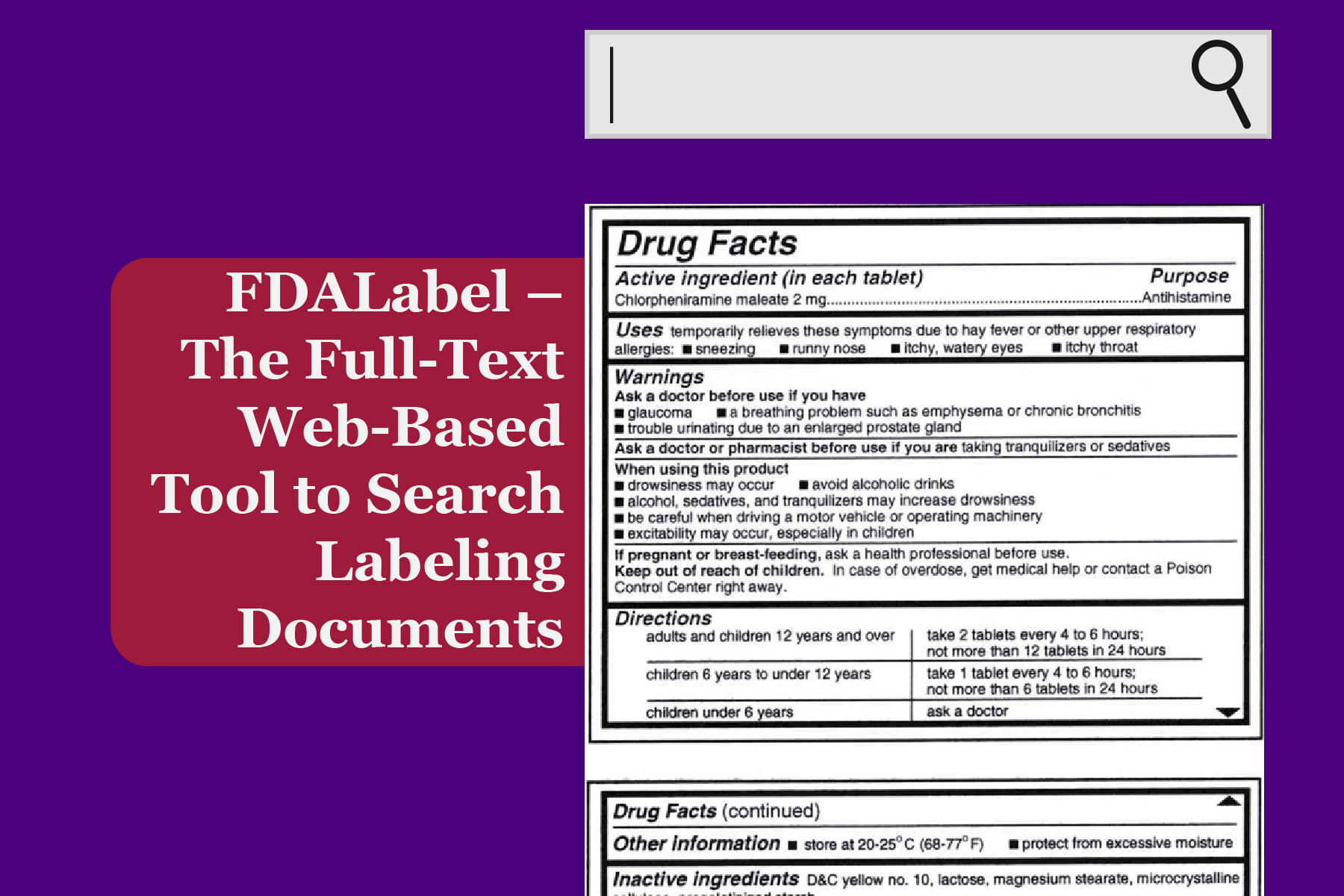Web-applications: These are simple computing tools that are designed and built for solving human problems and automating system workflows. The essential purpose of any web application is to provide a web interface and perform functions, including data creation, reading, edition, and deletion (CRUD). Presently, web apps perform several functionalities as compared to the traditional CRUD cycle. With technologies like Cloud and AI, the web application undergoes an upgrade in terms of features such as web security, scalability, data analytics, and text-based search. One such web app is the FDA’s Bioinformatics search tool, FDALabel.
FDALabel is a three-tier (client, application, and data tiers) architecture-based web application that provides results on labeling documents of FDA approved drug products. Using FDALabel, customized search queries can be created to get results from a massive database that consist of 130,000 human prescriptions, biological, over the counter (OTC), and animal drug labeling documents. Even though this tool provides a complete interface to search specific labeling documents, its functionality can be exploited for multiple purposes. The data results can be used by pharmaceutical companies to create similar or alternative drugs by studying the ingredients present in the labeling documents. Also, researchers can use this data to create visual data analytics, stating which type of products are most significant in the market and require more attention to the development or marketing stages. The labeling documents also provide access to other categorical data including medical devices, dietary supplements, and cosmetics.1
FDALabel features text-search using entire or specific label area sections. The same tool also provides access to document types, marketing categories, pharmacologic classes, and a feature to export data results to a spreadsheet. Indeed, a web-application resembles software running on the web, and if used in health and human services it should be FDA compliant.
For any web tool, initially, the entire software design needs to be appropriately documented. This step can be covered by drafting the system and unit level software requirements, the detailed software architecture, and the interfaces utilized for internal module communication. Also, each module should undergo unit testing which captures any safety-related hazards or risks. If such applications are integrated with class III medical devices, the FDA may ask the manufacturer to conduct clinical trials which is the software validation and verification. This step includes system and acceptance testing activities. All the specified steps, i.e., from the design documentation to the system testing, contribute towards the overall intended use of the application and the associated medical device. If the FDA observes that the web tool is well supported by appropriate software design documentation, follows stated guidelines such as 21 CFR Part 11 (Guidance for Maintenance of Electronic Documents and Digital Signatures), and captures all existing safety-related risks through sufficient testing documents, the FDA grants the approval or clearance to the medical device or the application.2
To summarize, the FDALabel is a sophisticated web-based tool for searching labeling documents of FDA approved drug products. This tool not only provides search functionality for labeling documents, but the results can be also utilized for clinical and drug-related research such as alternative medicine generation. Indirectly, such web applications contribute to the overall quality of patient care, thus enhancing online or digital healthcare services. Do you have a web application or medical device software that needs FDA approval or clearance? Our regulatory and software experts at EMMA International can help your medical device get FDA compliant. Contact us at 248-987-4497 or info@emmainternational.com for additional information.
1FDA (July 2020). FDALabel: Full-Text Search of Drug Labeling. Retrieved on 12/15/2020 from https://www.fda.gov/science-research/bioinformatics-tools/fdalabel-full-text-search-drug-labeling.
2FDA (May 2019). General Principles of Software Validation. Retrieved on 12/15/2020 from https://www.fda.gov/regulatory-information/search-fda-guidance-documents/general-principles-software-validation.






